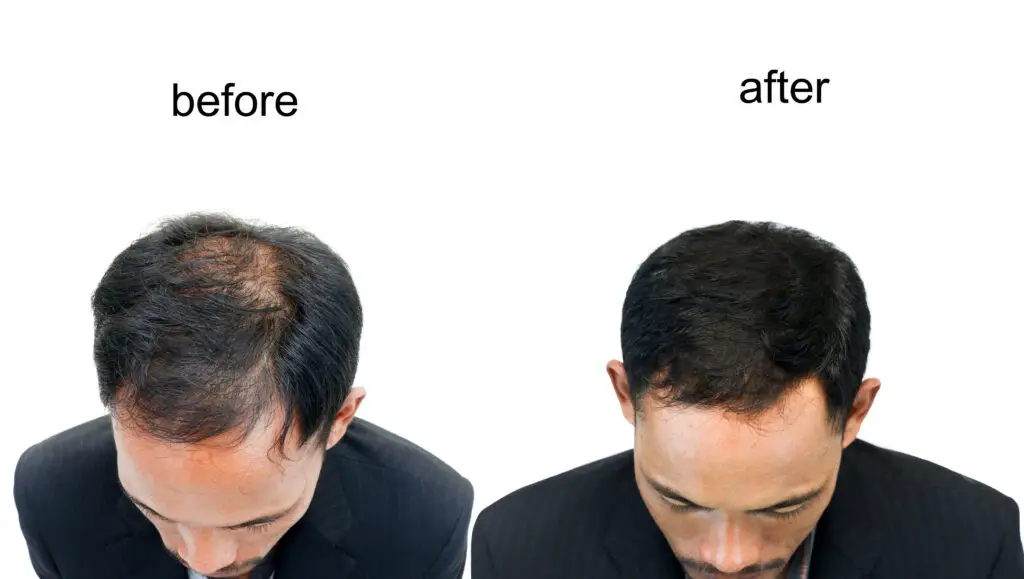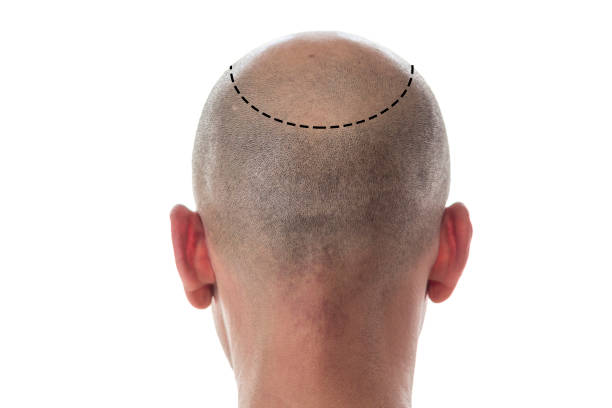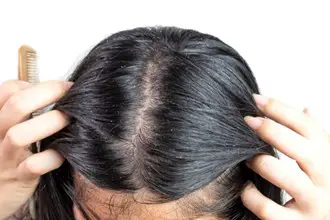Explore the future of hair restoration with our comprehensive guide on ‘Hair Cloning’. Learn about the science behind it, its potential benefits, costs, and the latest advancements in this promising field. Discover if hair cloning could be the solution to hair loss you’ve been waiting for.
Hair loss is a common issue that affects millions of people worldwide. It can have a significant impact on an individual’s self-esteem and overall quality of life. Over the years, various treatments have been developed to combat hair loss, ranging from topical medications to surgical procedures. However, none of these solutions offer a definitive cure for baldness. This is where hair cloning comes into the picture.
Hair cloning, also known as hair multiplication, is a cutting-edge technology that promises to revolutionize the field of hair restoration. It involves extracting healthy hair follicles from a patient, multiplying them in a lab, and then implanting them back into the patient’s scalp. This innovative procedure has the potential to provide a permanent solution to hair loss, making it a beacon of hope for those struggling with baldness.
In this comprehensive guide, we will delve deep into the world of hair cloning. We will explore how it compares to traditional hair transplantation, discuss the latest advancements in hair cloning technology, and address common questions and concerns about this promising treatment.
So, if you’re intrigued by the idea of hair cloning and want to learn more, keep reading. And if you’re interested in other hair restoration methods, check out our article on alternative hair transplant methods.
Key Takeaways
- Hair cloning is an exciting development in the field of hair restoration. This technology involves replicating a person’s hair follicles in a lab and implanting these clones into the scalp, potentially offering a new solution for hair loss.
- Despite the promise, hair cloning is still in the experimental stages. Significant progress has been made, but there are still hurdles to overcome before it becomes a widely available treatment.
- Questions remain about the safety, effectiveness, cost, and availability of hair cloning. These factors will be crucial in determining whether hair cloning becomes a viable option for those experiencing hair loss.
- While we wait for further developments in hair cloning, there are other effective treatments for hair loss available. These include hair transplantation and non-surgical options, which can be explored in depth in our articles on alternative treatments to hair transplant and how to reverse male pattern baldness naturally.
- As always, it’s important to consult with a healthcare professional or a hair restoration specialist to understand the best options for your specific situation. Stay informed and make decisions based on the most accurate and up-to-date information.
Is hair cloning available yet? Not quite, but we’re getting closer every day. Let’s dive into the details and discover the potential of this groundbreaking technology.
Continue Reading and Understanding Hair Cloning to learn more about the science and process behind hair cloning.
Understanding Hair Cloning
Hair cloning, or hair multiplication, is a technique that has been gaining significant attention in the field of hair restoration. But what exactly is hair cloning, and how does it work? Let’s break it down.
Hair cloning involves taking a small sample of hair follicles from the patient’s scalp – usually from the back of the head where hair growth is still robust. These follicles are then processed and cultured in a lab to create multiple copies, essentially cloning the original hair follicles. Once a sufficient number of follicles have been produced, they are implanted back into the patient’s scalp in the areas affected by hair loss.
The science behind hair cloning is rooted in stem cell research. Hair follicles contain a specific type of stem cell known as dermal papilla cells. These cells play a crucial role in hair growth and regeneration. When these cells are cultured in the lab, they have the potential to produce new hair follicles, which can then be used in hair transplantation.
While the concept of hair cloning sounds promising, it’s important to note that this technology is still in its early stages. There are several challenges that researchers are working to overcome. For instance, maintaining the inductive properties of dermal papilla cells during culture is a significant hurdle. Additionally, ensuring that the cloned follicles can integrate properly with the patient’s scalp and produce healthy, natural-looking hair is another major challenge.
Despite these challenges, progress is being made. In recent years, several research groups and companies have reported promising results in hair cloning research. For instance, a company called Stemson Therapeutics is developing a hair cloning technique that involves encapsulating dermal papilla cells in a 3D scaffold to maintain their inductive properties. Their preclinical studies have shown promising results, with the generation of new hair follicles that produce cosmetically acceptable hair.
While we wait for hair cloning to become a reality, there are other treatments available for hair loss. For instance, laser hair growing caps offer a non-invasive solution to stimulate hair growth.
Hair cloning is a fascinating field that holds great promise for the future of hair restoration. As research progresses, we may soon see a time when baldness can be effectively cured through this innovative technology.
In the next section, we’ll compare hair cloning with traditional hair transplantation methods. If you’re curious about how these two techniques stack up against each other, [continue reading](#Hair Cloning vs. Hair Transplantation).
Hair Cloning vs. Hair Transplantation
When it comes to hair restoration, hair transplantation has been the go-to method for many years. However, with the advent of hair cloning, a new contender has entered the ring. So, how do these two methods compare? Let’s take a closer look.
Hair transplantation is a surgical procedure that involves removing hair follicles from a part of the scalp where hair growth is still robust (usually the back of the head) and transplanting them to the areas affected by hair loss. This method has been proven to be effective and has provided satisfactory results for many patients. However, it has its limitations.
One of the main limitations of hair transplantation is that it relies on the patient’s existing hair follicles. This means that the success of the procedure largely depends on the number and quality of the patient’s remaining hair follicles. For patients with extensive hair loss, there may not be enough donor follicles to achieve the desired results. Additionally, hair transplantation is a surgical procedure, which means it comes with the risks and recovery time associated with surgery.
On the other hand, hair cloning, while still in the experimental stages, promises to overcome these limitations. As we’ve discussed earlier, hair cloning involves creating multiple copies of a patient’s hair follicles in a lab and then implanting them back into the patient’s scalp. This means that hair cloning could potentially provide an unlimited supply of hair follicles for transplantation, making it a promising solution for patients with extensive hair loss.
However, hair cloning is not without its challenges. The process of cloning hair follicles and ensuring that they can produce healthy, natural-looking hair is complex and still being perfected. Additionally, the cost of hair cloning, once it becomes available, is expected to be significantly higher than traditional hair transplantation, at least initially.
Here’s a quick comparison of the two methods:
| Hair Transplantation | Hair Cloning |
|---|---|
| Proven method with satisfactory results | Still in experimental stages |
| Limited by the number of donor follicles | Potential for unlimited supply of follicles |
| Surgical procedure with associated risks and recovery time | Expected to be less invasive |
| Cost is generally affordable | Expected to be more expensive |
While we wait for hair cloning to become a reality, hair transplantation remains a viable option for many patients. If you’re considering hair transplantation, our article on crown hair transplant provides valuable insights into the procedure.
In the next section, we’ll delve into the latest advancements in hair cloning technology. If you’re interested in learning about the cutting-edge research in this field, [continue reading](#Latest Advancements in Hair Cloning Technology).
Latest Advancements in Hair Cloning Technology
The field of hair cloning is rapidly evolving, with researchers around the world striving to overcome the challenges associated with this promising technology. Let’s take a look at some of the latest advancements in hair cloning technology.
One of the most notable advancements in the field comes from a company called Stemson Therapeutics. They are developing a technique that involves encapsulating dermal papilla cells in a 3D scaffold to maintain their inductive properties. This approach has shown promising results in preclinical studies, with the generation of new hair follicles that produce cosmetically acceptable hair.
Another significant development comes from Japan, where a team of researchers led by Dr. Tsuji from the RIKEN Center for Biosystems Dynamics Research has been working on a method to regenerate entire hair follicles from stem cells. Their research has shown promising results in animal models, and human trials are expected to commence soon.
In addition to these, several other research groups and companies are making strides in hair cloning technology. For instance, HairClone, a UK-based company, is working on a follicle banking service where patients’ hair follicles can be cryopreserved for future use in hair cloning procedures.
While these advancements are exciting, it’s important to note that hair cloning is still in the experimental stages. The process of cloning hair follicles and ensuring that they can produce healthy, natural-looking hair is complex and still being perfected. Additionally, the cost of hair cloning, once it becomes available, is expected to be significantly higher than traditional hair transplantation, at least initially.
However, the potential benefits of hair cloning make it a field worth watching. If successful, hair cloning could revolutionize the field of hair restoration, providing a permanent solution to hair loss for millions of people worldwide.
Here are some of the latest advancements in hair cloning technology:
- Development of a 3D scaffold to maintain the inductive properties of dermal papilla cells (Stemson Therapeutics)
- Regeneration of entire hair follicles from stem cells (RIKEN Center for Biosystems Dynamics Research)
- Follicle banking service for future use in hair cloning procedures (HairClone)
While we wait for these advancements to materialize, there are other treatments available for hair loss. For instance, DNA tests for hair loss can provide valuable insights into your genetic predisposition to hair loss and guide treatment decisions.
In the next section, we’ll discuss the cost and availability of hair cloning. If you’re wondering when hair cloning will be available and how much it might cost, [continue reading](#Cost and Availability of Hair Cloning).
Cost and Availability of Hair Cloning
One of the most common questions about hair cloning is, “When will it be available, and how much will it cost?” Let’s address these questions based on the current state of research and development in the field.
As of now, hair cloning is still in the experimental stages. While significant progress has been made, and several research groups and companies have reported promising results, hair cloning is not yet available as a commercial treatment. It’s difficult to predict exactly when hair cloning will be available, but some experts estimate that it could be within the next few years.
The cost of hair cloning, once it becomes available, is expected to be significantly higher than traditional hair transplantation, at least initially. This is due to the complex and time-consuming process of cloning hair follicles in a lab. However, as the technology matures and becomes more widely available, the cost is likely to decrease.
It’s also worth noting that the cost of hair cloning will vary depending on several factors, including the extent of hair loss, the number of follicles that need to be cloned, and the specific technique used. Therefore, it’s difficult to provide an exact cost estimate at this time.
While we wait for hair cloning to become a reality, there are other treatments available for hair loss. For instance, hair replacement systems offer a non-surgical solution for those seeking immediate results.
In the next section, we’ll discuss the potential side effects and safety of hair cloning. If you’re concerned about the safety of this promising treatment, [continue reading](#Potential Side Effects and Safety of Hair Cloning).
Potential Side Effects and Safety of Hair Cloning
As with any medical procedure, it’s important to consider the potential side effects and safety of hair cloning. While the technology is still in its experimental stages, let’s discuss what we know so far.
One of the main concerns with hair cloning is ensuring that the cloned hair follicles can integrate properly with the patient’s scalp and produce healthy, natural-looking hair. If the cloned follicles do not integrate properly, it could result in unnatural hair growth patterns or poor hair quality.
Another concern is the potential for adverse reactions to the procedure. As with any medical procedure, there’s always a risk of infection, inflammation, or allergic reactions. However, since hair cloning involves using the patient’s own cells, the risk of rejection or allergic reactions is expected to be low.
There’s also the question of long-term safety. Since hair cloning is a relatively new technology, the long-term effects are not yet known. Researchers will need to conduct long-term studies to ensure that the procedure does not have any unforeseen side effects or risks.
Despite these concerns, it’s important to note that the researchers and companies working on hair cloning are taking these issues very seriously. They are conducting rigorous testing and trials to ensure the safety and effectiveness of the procedure.
While we wait for more information on the safety and potential side effects of hair cloning, there are other treatments available for hair loss that have been proven to be safe and effective. For instance, alternative treatments to hair transplant offer a range of options for those seeking non-surgical solutions.
In the next section, we’ll answer some frequently asked questions about hair cloning. If you have more questions about this promising technology, [continue reading](#Frequently Asked Questions About Hair Cloning).
Frequently Asked Questions about Hair Cloning
Hair cloning is a topic that generates a lot of interest and, understandably, a lot of questions. In this section, we’ll address some of the most frequently asked questions about hair cloning.
1. What is hair cloning?
Hair cloning is a promising technology in the field of hair restoration. It involves taking a small sample of a person’s hair follicles, cloning them in a lab to create multiple copies, and then implanting these cloned follicles back into the person’s scalp to stimulate hair growth.
2. Is hair cloning available yet?
As of now, hair cloning is still in the experimental stages. While significant progress has been made, and several research groups and companies have reported promising results, hair cloning is not yet available as a commercial treatment.
3. How much will hair cloning cost?
The cost of hair cloning, once it becomes available, is expected to be significantly higher than traditional hair transplantation, at least initially. However, as the technology matures and becomes more widely available, the cost is likely to decrease.
4. Is hair cloning safe?
While hair cloning is still in its experimental stages, the researchers and companies working on this technology are taking safety very seriously. They are conducting rigorous testing and trials to ensure the safety and effectiveness of the procedure. However, as with any medical procedure, there will be some risks, which will need to be thoroughly understood before the procedure becomes widely available.
5. What is the difference between hair cloning and hair transplantation?
Hair transplantation is a surgical procedure that involves moving hair follicles from one part of the scalp to another. Hair cloning, on the other hand, involves creating multiple copies of a person’s hair follicles in a lab and then implanting these cloned follicles back into the person’s scalp.
For more information on hair loss and treatments, check out our articles on how long does it take to go bald and why there is no cure for male pattern baldness.
Conclusion
Hair cloning is a fascinating and promising technology that could revolutionize the field of hair restoration. While it’s still in the experimental stages, the progress made so far is encouraging, and we may see hair cloning become a reality in the not-too-distant future.
However, as with any new technology, there are still many questions to be answered and challenges to be overcome. The safety and effectiveness of the procedure need to be thoroughly tested, and the cost and availability of the treatment will also be significant factors.
In the meantime, there are other treatments available for hair loss, including hair transplantation and non-surgical options like hair replacement systems and alternative treatments to hair transplant.
Remember, while hair cloning offers a promising future for hair loss treatment, it’s important to consult with a healthcare professional or a hair restoration specialist to understand the best options for your specific situation. Always stay informed and make decisions based on the most accurate and up-to-date information.
For more information on hair loss and treatments, continue exploring our website. You might find our article on how to reverse male pattern baldness naturally particularly interesting.
References:
Sure, here’s a different format for the references with hyperlinked text:
- New Molecule Discovered That Strongly Stimulates Hair Growth, University of California-Irvine, SciTechDaily, August 13, 2022.
- Methods of Hair cloning, hairforlife.info, July 21, 2020.
- Grow New Follicles, columbia.edu, December 14, 2013.
- Hair Care and Trichology | Health Articles | The Future of Hair Restoration, Worldwidehealth.com, January 31, 2014.
- Detail How Intercytex Failed Fully In Developing Hair Cloning Therapy, HD Hairlines.
- Intercytex Discontinues its Hair Multiplication Development Operations | Hair Loss Q & A, Regrowhair.com, January 7, 2010.
- AI Powered Bald Filter Online 2024: See Yourself with No Hair! - January 19, 2024
- Harklinikken Bad Reviews 2024: Analyzing Negative Feedbacks - January 18, 2024
- How to Get the Alex Eubank Hair | Step-By-Step Tutorial 2024 - January 18, 2024







